HABERT-DYS, J[ULES-AUGUSTE] - Fantaisies Decoratives. Documents pour servir a la decoration des Faiences, Meubles, Tissus, Bijoux, appartements, etc. .... Quarante-huit planches renfermant environ deux cents motifs. Paris, Librairie de l'Art, n.d. [1887-8] . 48 superb chromolithograph plates by Gillot, greatly influenced by the Japanese style and in a very accomplished art nouveau air, all heightened with gold, on cream paper, mounted on heavy white paper. Folio, (4) pages, title and list of plates.
This copy bound in library cloth (the original issued in parts in portfolio), with each plate mounted on cloth tabs. The spine of the book has been damaged with tears on the upper portion--one of which is 6" long-- but the plates are FINE. $900 (There were subsequent editions of this work that seem to have appeared in 1904/1908/1910, all of which seem to have had no more than 32 plates. I have seen the plates offered individually from $25-$200/each.)
The following description of the lithographs from the Fantisies Decoratives at the Tides Institute and Museum of Eastport from 2009:
"By 1886, Habert-Dys was a well-respected designer and illustrator, but the main problem for him, in terms of posterity, is his subtle style. Without seeing the originals, his work is not striking enough to attract attention and no reproduction can do justice to the delicate, beautiful, details and colors that he incorporates into his designs. The Fantasies Decoratives, published in 1886, was a one-year project with forty-eight lithographs issued in twelve parts. The colored gravures, many containing gold, were printed on “papier du Chine” by noted lithographer, Charles Gillot (1853 – 1903), whose work was so respected that his lithographs were called “Gillotypes”.
"The intricate patterns, featuring birds, animals, flowers, fish, insects, shellfish, and frogs, were designed for ceramics, plates and dishes, textiles, wallpaper, vases, and jewelry. In these exquisite creations, Habert-Dys adopted many elements of Japanese influence (Japonisme), which reflect the late nineteenth century’s fascination with Japanese art. The Fantasies Decoratives also contain elements of line and curve that later became an intrinsic characteristic of the next major movement in the art world, Art Nouveau."

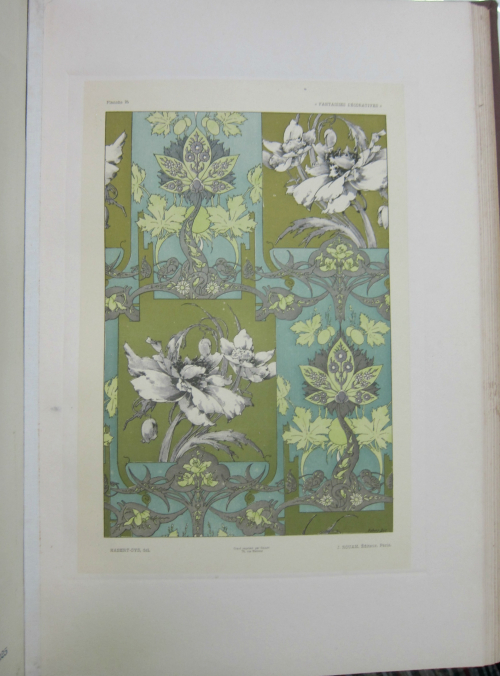
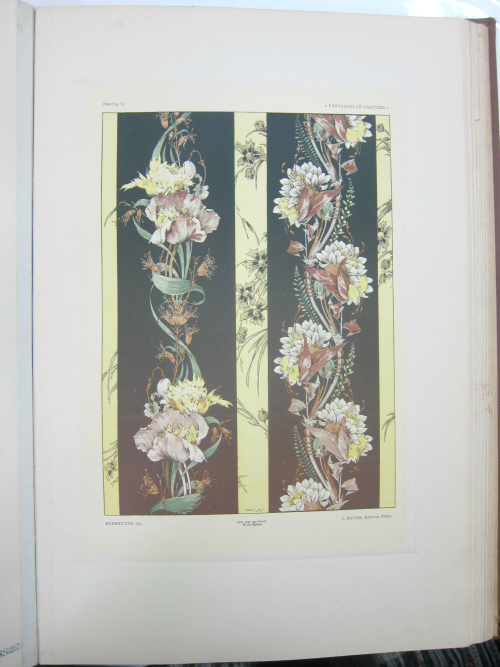
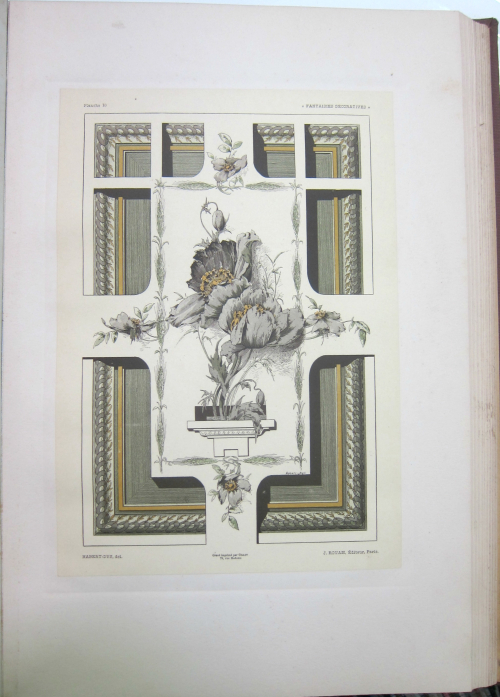
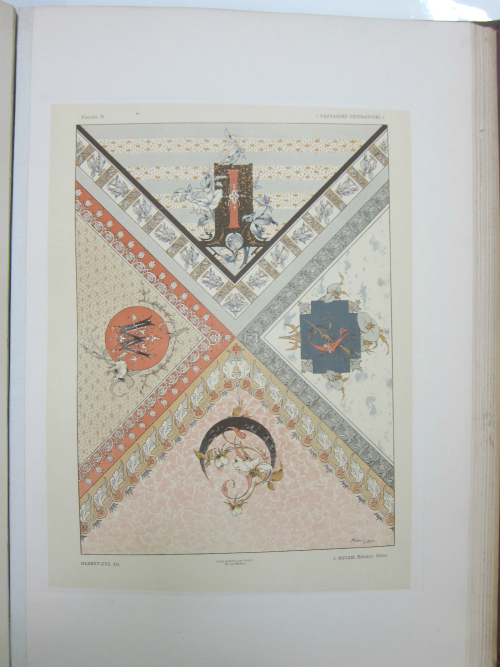
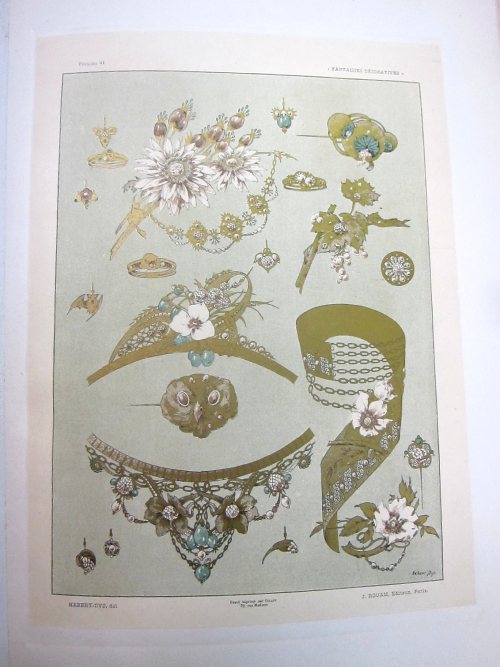
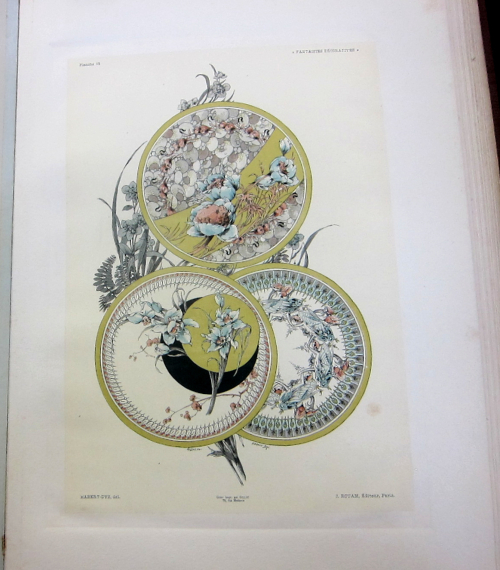
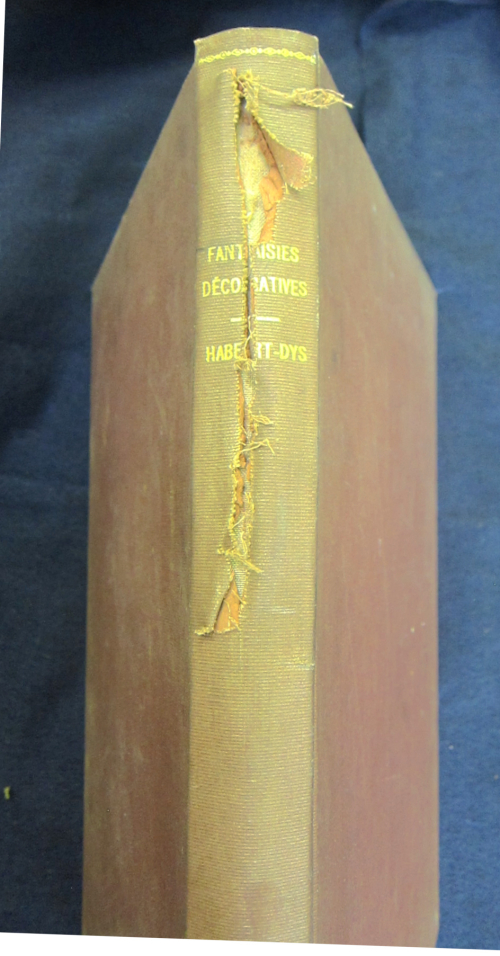
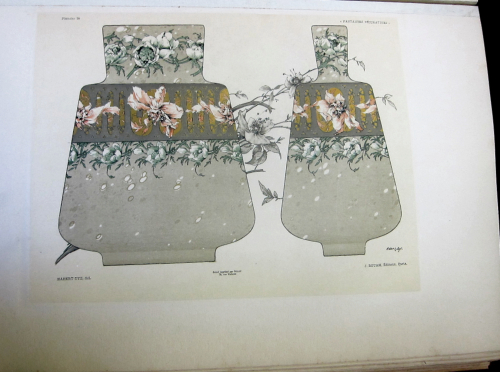


Comments